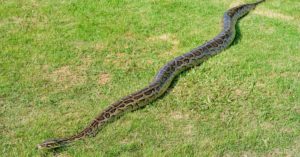Over 100,000 alligators live in South Carolina’s coastal areas, lakes, swamps, and 29,898 miles of meandering rivers. South Carolina is divided by the Fall Line, a 900-mile-long natural boundary that divides the state. It runs alongside U.S. Highway 1. Above the fall line is the Piedmont plateau region, and below is the Atlantic Coastal Plain. The Coastal Plain is where most alligators reside. Let’s discover the top 7 most alligator-infested rivers in South Carolina.
Savannah River
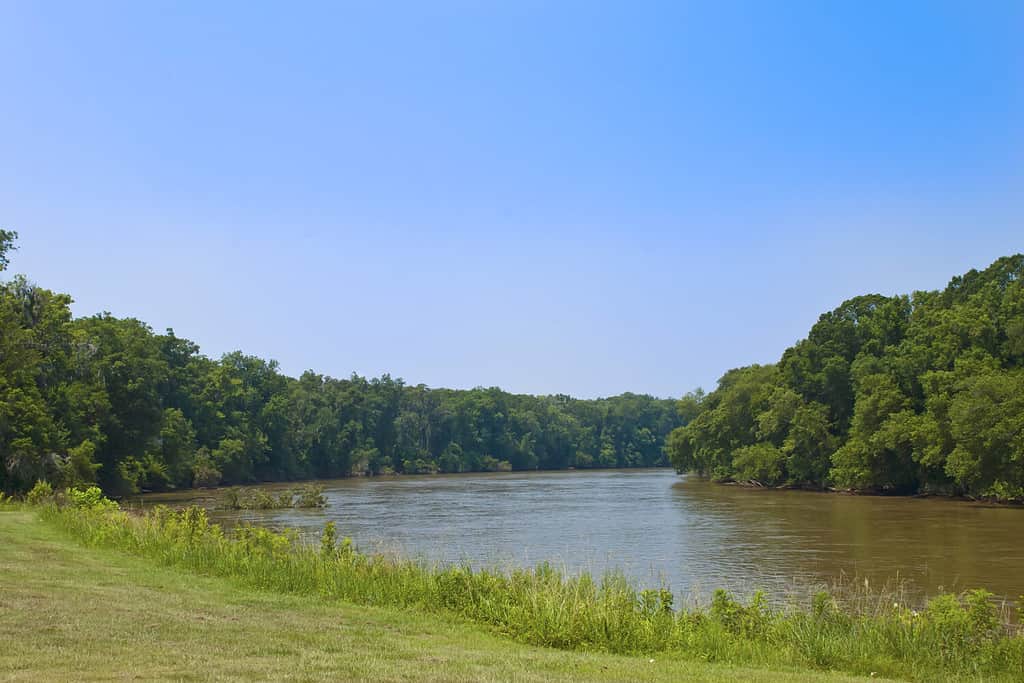
The number one alligator-infested river in South Carolina is the Savannah River.
©Denton Rumsey/Shutterstock.com
301-mile-long Savannah River is the number one most alligator-infested river in South Carolina. It flows from Hartwell to Savannah, then into the Atlantic Ocean, creating the South Carolina – Georgia border on its winding way.
This epic river is home to rare wildlife species, including 12 endangered species. Many alligators live in the Savannah River due to its abundant fish and bird life, and female gators dig out nests in the riverbanks to raise their babies.
The Savannah River Ecology Laboratory (SREL) studies alligators here to discover how pollutants affect long-lived reptiles and tracks individuals using GPS satellite transmitters attached to bony neck plates. It turns out that alligators in the Savannah River don’t stay put; they move about a lot. One Savannah River resident alligator undertook several ten-mile trips over land and plantations to hunt elsewhere.
Pee Dee River
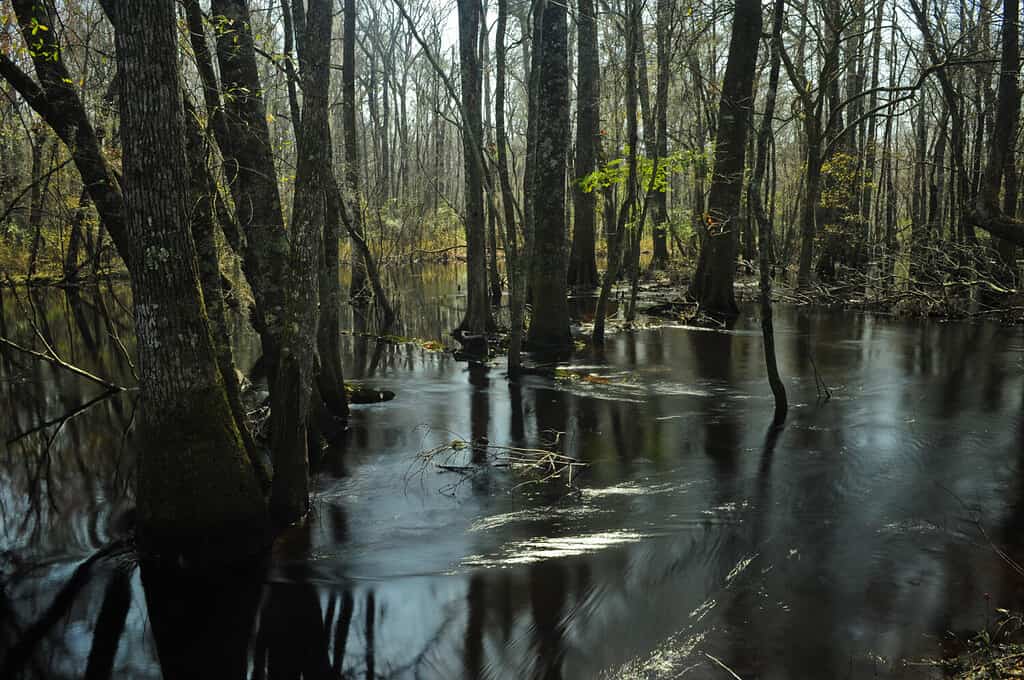
Alligators inhabit the Pee Dee River alongside herons, numerous fish species, and turtles.
©Don Fink/Shutterstock.com
The Great Pee Dee River is named for the Native American tribe that resided along the banks. Its headwaters flow from North Carolina’s Appalachian Mountains and pour into the Atlantic Ocean near Georgetown.
The lower part of the Pee Dee River, from Highway 378 to Winyah Bay, is a scenic river with numerous boat landings. However, it’s still a wild river with many animals living in the waters and on its shores. Bald eagles frequent its waters alongside herons and alligators. A 12-footer, just two feet shorter than the state record, was caught here.
Anglers and hunters say the Pee Dee River has its fair share of alligators, and these gators travel up Jeffries Creek into the City of Florence.
Little Pee Dee River

Alligators inhabit the cypress-tupelo swamps and riverbanks of the Little Pee Dee River.
©Wirestock Creators/Shutterstock.com
Little Pee Dee River joins the Great Pee Dee River, so it’s no surprise alligators inhabit its waters, too. From U.S. Highway 378 Bridge to its merge with the Great Pee Dee, this river is a State Scenic River. It flows through Marion County and Horry County, the site of a fatal alligator attack.
The scenic river section includes cypress-tupelo swamps, freshwater sandy stream bars, and all good alligator habitats. Besides its plentiful alligator population, freshwater fish like redbreast, bluegill, bass, crappie, and catfish keep them well-fed. Other animals thriving in and around Little Pee Dee River are water snakes, turtles, otters, and beavers.
Edisto River
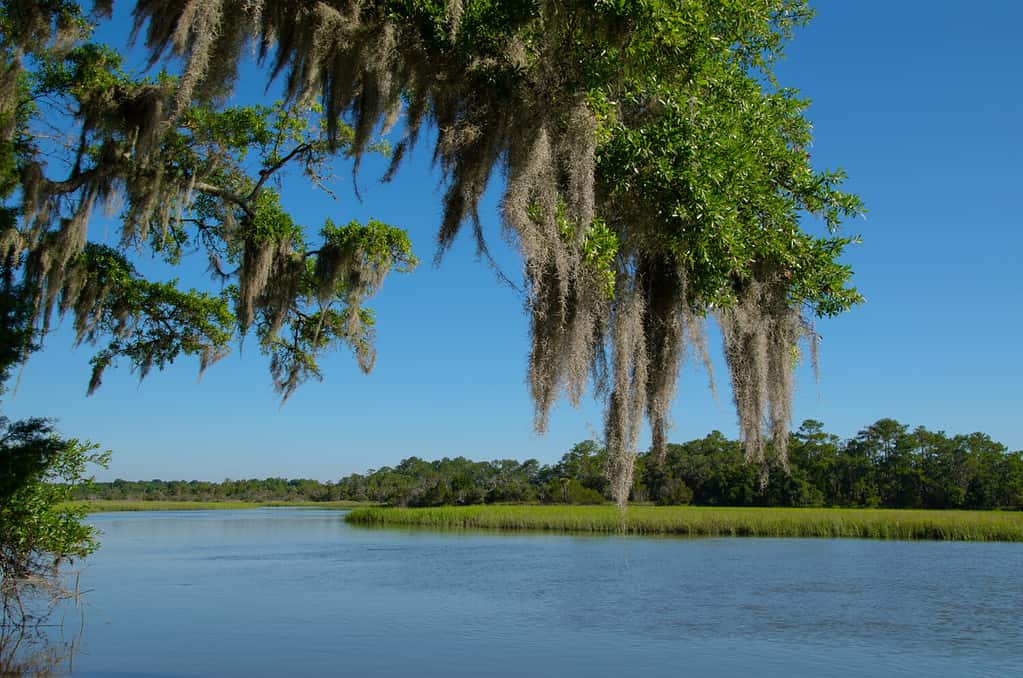
The Edisto River provides perfect habitats for alligators.
©Serge Skiba/Shutterstock.com
Edisto River winds its way through the low country. It’s slow-moving, marshy, and surrounded by palmetto thickets, swamps, and marshes – perfect alligator environments. In 2021, a 12-foot-long, 445-pound alligator was killed here. When its stomach was opened, five dog collars, bobcat claws, and turtle shells were discovered inside. That’s a real eye-opener into what alligators in the Edisto River eat.
This river is a long, free-flowing blackwater river. It stretches over 150 miles from Saluda and Edgefield Counties to the Atlantic Ocean via South Carolina’s Edisto Beach. Carp, longnose gar, American eel, and redbreast sunfish thrive in its water.
Waccamaw River
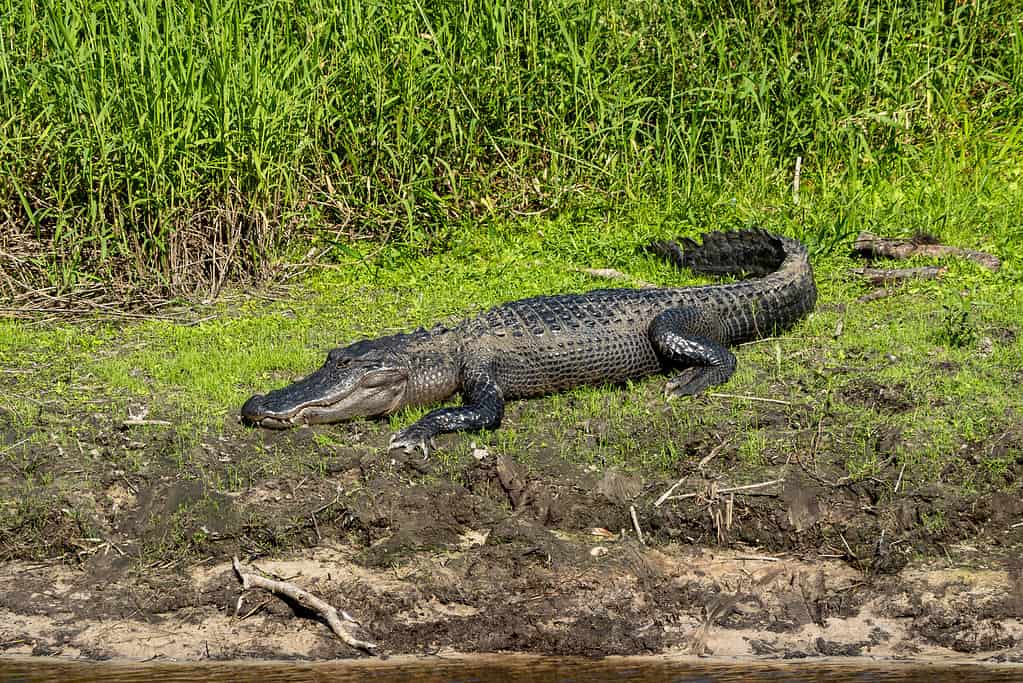
South Carolina’s longest-ever alligator was captured from the Waccamaw River.
©FlagtailsPhotography/iStock via Getty Images
The longest alligator killed on the Waccamaw River, not far from Myrtle Beach, was 13 feet and five inches long, a state record for South Carolina. Since the record-breaking 2010 catch, locals have reported multiple alligator sightings along this stretch of slow-moving water.
Waccamaw River flows from Lake Waccamaw in North Carolina to Winyah Bay in South Carolina. The wildlife habitat areas here are second to none. This is a wild area of the Coastal Plain and an alligator stronghold. The sturdy but pliable riverbanks create excellent alligator holes and nesting sites. Numerous water bird species and fish provide rich nutrition, too.
Santee River
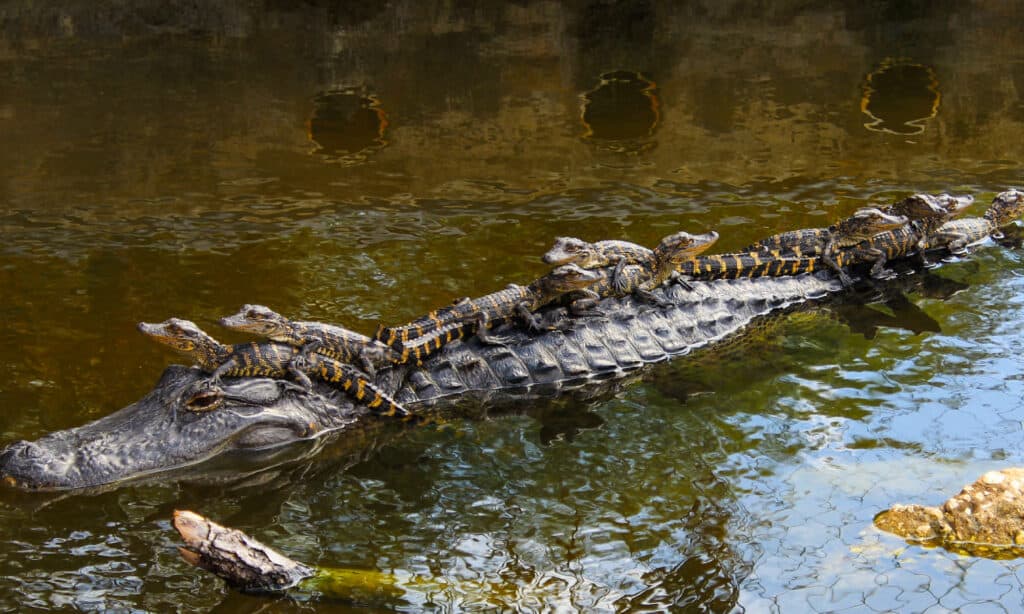
The Santee River flows to Lake Marion, South Carolina’s number one alligator spot.
©Marc Pletcher/Shutterstock.com
The Santee River is home to a strong population of alligators feeding on its abundant fish, water birds, and mammals.
145-mile-long Santee River drains most of southeastern South Carolina and flows in Lake Marion’s northwest corner. Lake Marion hosts the greatest population of alligators in South Carolina. Over 100 live in its shallows, swamps, and coves.
Santee River is alligator-infested from its headwaters at the confluence of Congaree and Wateree Rivers, through Lake Marion, and into Santee Point, where it flows into the Atlantic Ocean.
Congaree River
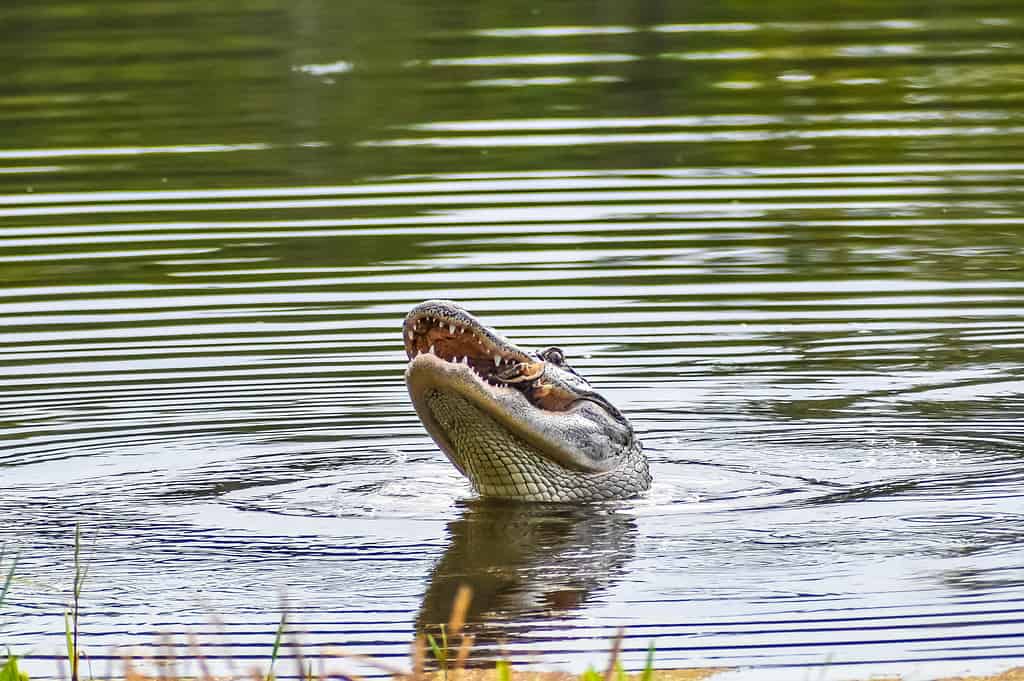
Alligators prey on abundant turtles in the Conagree vvnmfdedkj3hjnrefruntgr jneRiver.
©Jaimie Tuchman/iStock / Getty Images Plus via Getty Images
The Congaree River is a 53-mile-long river that flows from its headwaters at the confluence of Broad and Saluda Rivers on the Fall Line. It then merges with the Wateree River to create an alligator-infested Santee River.
The Congaree River is a hot spot for alligators in South Carolina’s midland. Its swampy, marshland areas make suitable gator habitats, but alligators are also frequently in urban Riverfront Park and Canal in Richland County, where they bask on riverbanks.
Other animals that inhabit the Congaree River and its surrounds include cottonmouth and brown water snakes, otters, turtles, bobcats, and wild turkeys. There’s no shortage of gator food in the Conagree River.
South Carolina Rivers With Alligator Populations
According to wildlife officials, the Savannah River is the most alligator-infested lake in South Carolina. However, the Pee Dee, Little Pee Dee, Edisto, Waccamaw, Santee, and Congaree Rivers all hold hefty populations, too.
Below the fall line (and increasingly, above it), any body of water in South Carolina may contain an alligator. The fatal attack in Horry County occurred in a retention pool, so swimming in any water poses a risk. Never swim alone, at dawn or dusk, or near overhanging vegetation. Alligators resemble floating logs in water; swimmers should not take chances in South Carolina!
The photo featured at the top of this post is © Marc Pletcher/Shutterstock.com
Thank you for reading! Have some feedback for us? Contact the AZ Animals editorial team.



